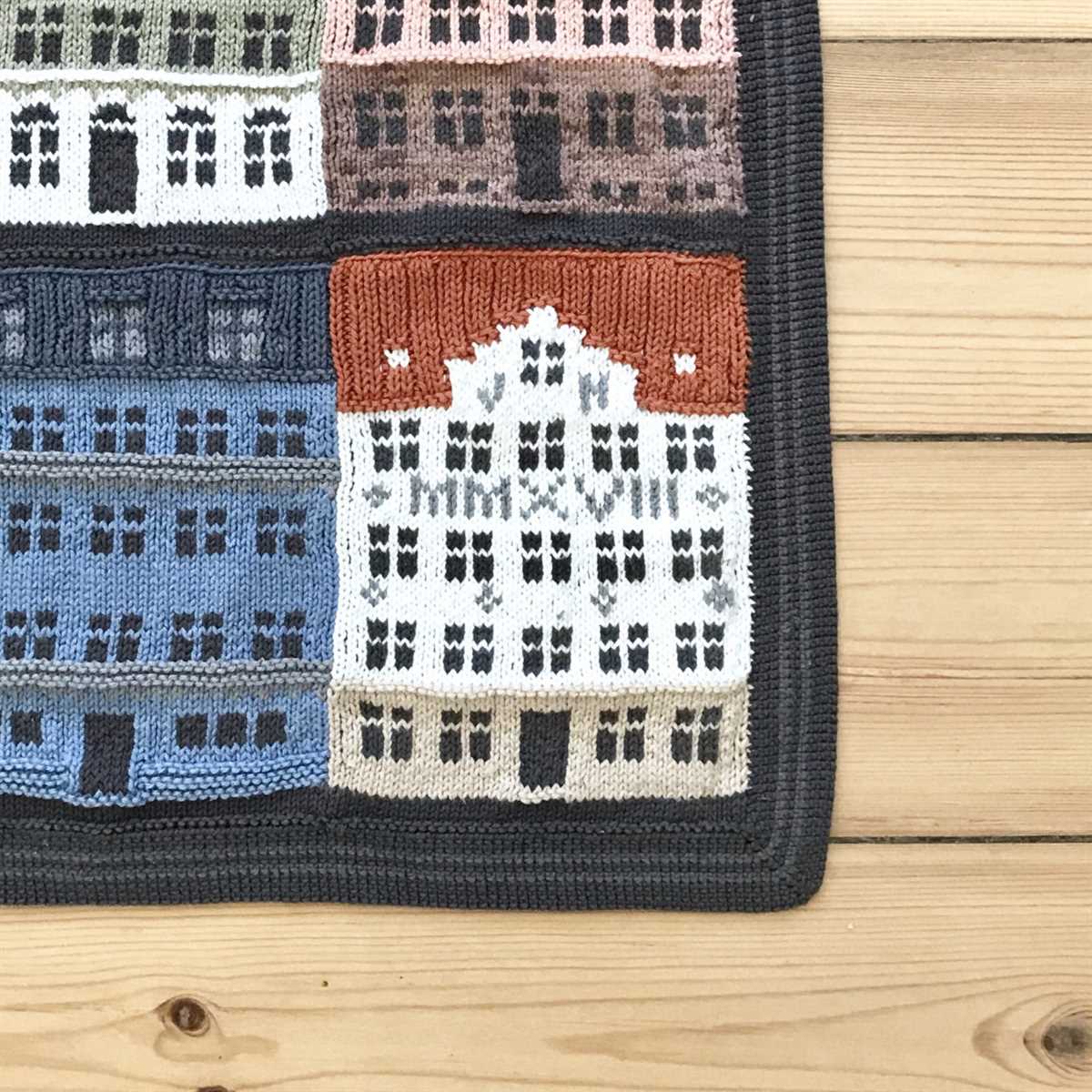
Knitting is a craft that has been practiced for centuries, and it continues to be a popular hobby today. One of the most versatile and creative aspects of knitting is creating patterns using blocks.
Knitting block patterns are a way to create unique and visually interesting designs by combining different stitch patterns and colors. These blocks can be used to make a variety of projects, such as scarves, blankets, and even garments. The possibilities are endless!
Knitting blocks patterns allow knitters to showcase their creativity and experiment with different textures and color combinations. They can be simple or intricate, depending on the knitter’s skill level and desired outcome. Additionally, knitting block patterns are a great way for beginners to practice and learn new stitches and techniques.
Whether you’re a seasoned knitter looking for a new challenge or a beginner wanting to try something different, exploring knitting block patterns is a fantastic way to expand your skills and create beautiful and unique pieces. So grab your knitting needles and start creating your own stunning designs!
Overview of Knitting Blocks Patterns
Knitting blocks patterns are a popular choice among knitters of all levels, as they offer a versatile and creative way to create stunning knit projects. These patterns involve knitting individual blocks or squares, which can then be joined together to make various items such as blankets, scarves, afghans, or even garments.
One of the advantages of knitting blocks patterns is the ability to experiment with different stitch patterns, colors, and yarns. Each block can be an opportunity to try out a new stitch pattern, such as cables, lace, or colorwork, allowing knitters to expand their skills and create unique designs. Additionally, the use of different colors and yarns can further enhance the visual appeal of the knitted blocks, making them a great choice for showcasing color gradients or creating intricate patterns.
When it comes to knitting blocks patterns, there are various approaches that can be taken. Some knitters prefer to knit each block individually and then stitch them together using a sewing or crochet method. This method offers more flexibility in terms of design and is ideal for those who enjoy the process of piecing together different blocks.
Another approach is to knit the blocks together as you go, either by picking up stitches along the edges of each block or by using a join-as-you-go method. This method eliminates the need for seaming or stitching, resulting in a seamless and polished finished piece. It can be a faster option for those who prefer to have fewer finishing steps involved.
To assist knitters in creating their own blocks patterns, there are numerous resources available, including knitting books, magazines, online tutorials, and knitting communities. These resources provide instructions, stitch patterns, and design ideas, allowing knitters to create their own unique combinations and arrangements of blocks. With so many possibilities, knitting blocks patterns offer endless opportunities for creativity and personal expression.
Benefits of Knitting Blocks Patterns
Knitting blocks patterns are a popular choice among knitters for several reasons. Firstly, they offer a great way to showcase different stitch patterns and textures. By knitting blocks in different stitch patterns, you can create a visually interesting and dynamic finished piece. This adds a unique touch to your knitting projects and allows you to showcase your creativity and skills.
Another benefit of knitting blocks patterns is that they provide an opportunity for skill-building and practice. Each block presents a new challenge, whether it’s a new stitch pattern or a different technique. By knitting a variety of blocks, you can expand your knitting skills and become more proficient in different techniques. This can enhance your overall knitting abilities and open up new possibilities for future projects.
Additionally, knitting blocks patterns offer versatility and flexibility in terms of project size and design. You can easily adjust the number of blocks to create a larger or smaller project, depending on your preferences and needs. This makes knitting blocks patterns suitable for a range of projects, from small accessories like scarves and shawls to larger items like blankets and afghans.
In conclusion, knitting blocks patterns offer several benefits, including the opportunity to showcase different stitch patterns, the chance to build skills and practice new techniques, and the versatility to create projects of various sizes and designs. Whether you’re a beginner looking to improve your knitting skills or an experienced knitter looking for a new challenge, knitting blocks patterns are a great choice.
Popular Knitting Block Designs
Knitting blocks are an essential part of creating beautiful and unique patterns. They are small sections of a larger piece that can be combined in various ways to create intricate designs. These blocks can be knit individually and later sewn together, or they can be worked seamlessly as you go. Whatever method you choose, there are several popular knitting block designs that can add interest and texture to your projects.
One popular knitting block design is the garter stitch block. The garter stitch is created by knitting every row, resulting in a textured fabric that is reversible and lies flat. This basic block can be used as a building block for larger patterns or repeated to create a simple, yet elegant design. The garter stitch block is perfect for beginners as it is easy to knit and provides a solid foundation for more complex patterns.
1. Cable Block Design
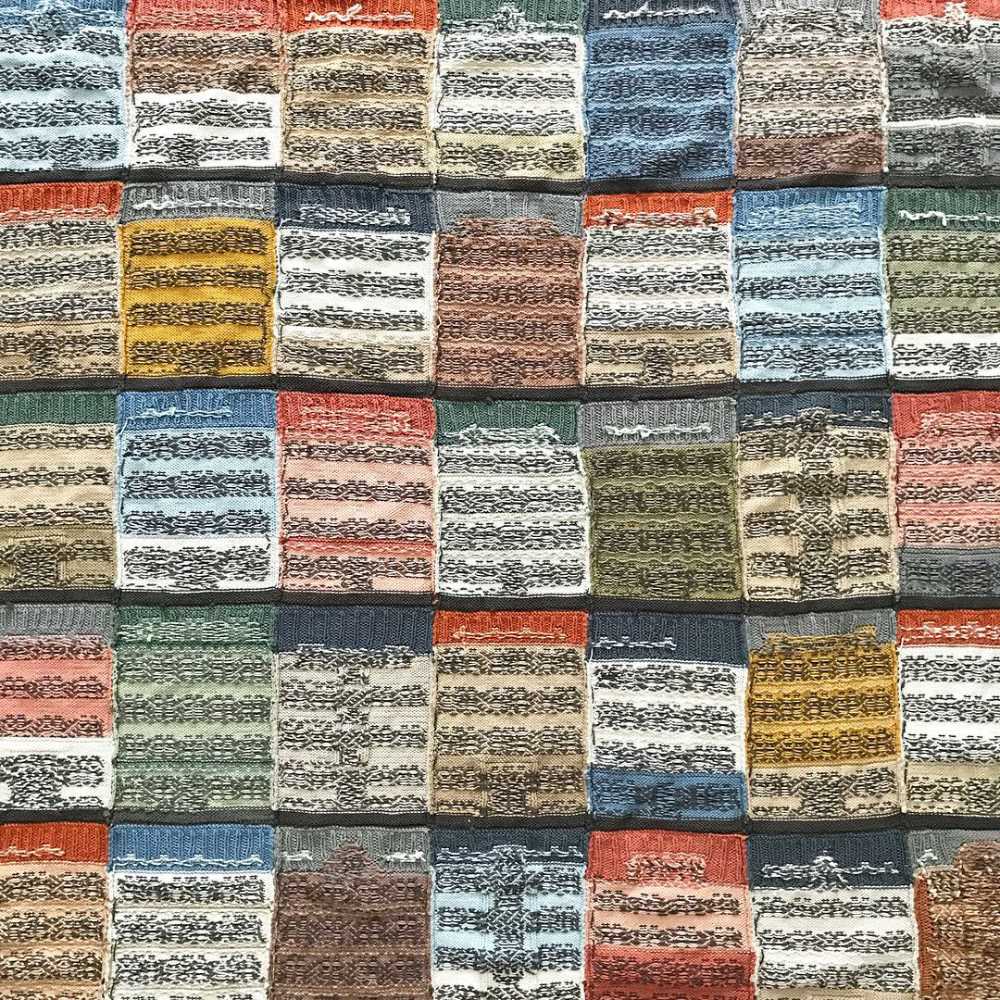
Another popular knitting block design is the cable block. Cables are created by crossing stitches over each other, creating a twisted effect in the fabric. This block design adds depth and visual interest to any project, whether it’s a sweater, scarf, or blanket. Cables can be arranged in various patterns, such as braids or twists, allowing for endless creative possibilities. While cables may appear complex, they are actually quite simple to knit once you understand the technique.
2. Lace Block Design
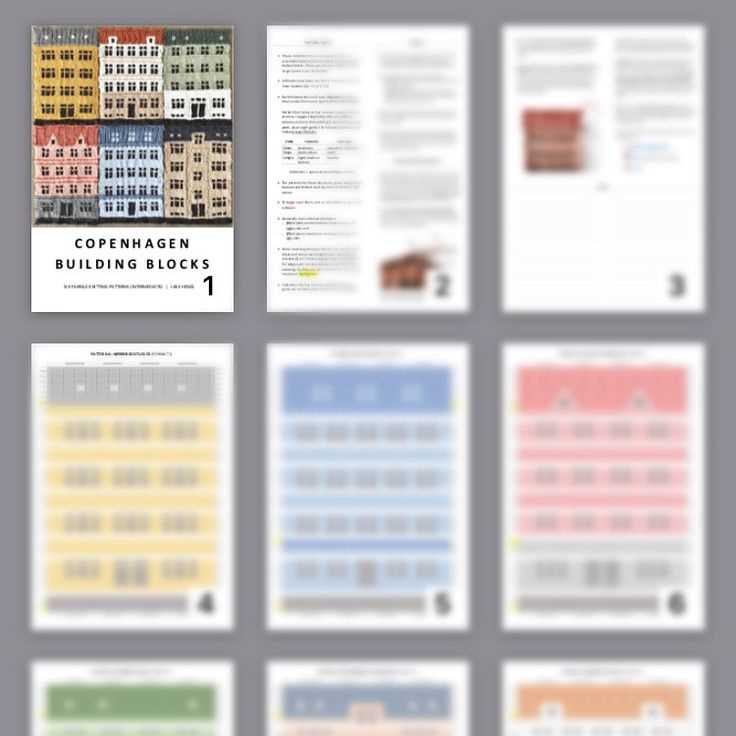
Lace knitting is a delicate and intricate technique that creates beautiful, openwork patterns. Lace blocks typically feature a combination of yarn overs and decreases to form decorative motifs, such as leaves or flowers. This block design adds a touch of elegance and femininity to any project. Lace blocks can be used as edging or incorporated into larger patterns, adding a delicate and airy feel to the finished piece. While lace knitting may require more attention to detail, the end result is well worth the effort.
3. Colorwork Block Design
Colorwork, also known as fair isle or stranded knitting, involves working with multiple colors in a single row. This block design allows you to create intricate patterns and motifs using different colored yarns. From traditional Nordic designs to modern geometric shapes, the possibilities are endless with colorwork blocks. This technique adds vibrancy and visual interest to your projects, making them truly one-of-a-kind. While colorwork may require a bit more skill and patience, the stunning results are sure to impress.
In conclusion, knitting block designs offer endless possibilities for creating unique and visually appealing patterns. Whether you prefer the simplicity of garter stitch, the complexity of cables, the delicacy of lace, or the vibrancy of colorwork, there is a knitting block design to suit your style and skill level. So grab your needles and start experimenting with these popular designs to take your knitting projects to the next level.
Garter Stitch Block
The garter stitch block is a basic knitting pattern that creates a textured fabric with a series of knit stitches. It is characterized by its simplicity and versatility, making it an ideal choice for both beginner and experienced knitters. This block pattern is often used as a building block for other knitting projects, such as blankets, scarves, and bags.
To create a garter stitch block, all you need to know is how to knit. The pattern is worked by knitting every row, resulting in a fabric that is entirely made up of knitted stitches on both the right and wrong sides. The garter stitch creates a squishy and textured fabric that is reversible and lies flat, making it perfect for various knitting projects.
One of the advantages of using the garter stitch block is its ease of knitting. It is a great pattern for knitters who are new to the craft, as it only requires basic knitting skills. The repetitive nature of knitting every row also makes it a relaxing and mindless knitting project. Additionally, the garter stitch block is a great way to practice tension and gauge, as it is forgiving and doesn’t show inconsistencies as easily as other stitch patterns.
The garter stitch block can be customized in various ways to add interest and visual appeal to your knitting projects. You can knit the block using different colors to create stripes, or incorporate other stitch patterns within the garter stitch fabric. The possibilities are endless, and the garter stitch block serves as a foundation for creativity and experimentation in knitting.
Stockinette Stitch Block
The stockinette stitch is one of the most basic knitting stitches and is often used as the foundation for various knitting projects. This block pattern is a great way to practice and showcase the stockinette stitch while creating a versatile knitted square.
To create the stockinette stitch block, you will need to alternate between knitting and purling rows. Start by casting on the desired number of stitches. In the first row, knit each stitch. In the second row, purl each stitch. Continue repeating these two rows until the desired length is reached.
Materials:
- Knitting needles
- Yarn
Instructions:
- Cast on the desired number of stitches.
- Row 1: Knit each stitch.
- Row 2: Purl each stitch.
- Repeat Rows 1 and 2 until the desired length is reached.
- Bind off all stitches.
The stockinette stitch block can be used to create a variety of knitted projects, such as blankets, scarves, and even garments. It creates a smooth and flat fabric with one side showing the characteristic “V” shape of knit stitches, and the other side showing the “bump” shape of purl stitches. This block pattern is a great foundation for more complex stitch patterns or can be used alone to showcase the simplicity and beauty of the stockinette stitch.
Cable Stitch Block
The cable stitch block is a popular knitting pattern that adds texture and interest to any knitting project. It is characterized by its twisting and crossing stitches, which create a beautiful cable design. The cable stitch block is often used in projects such as sweaters, scarves, and blankets, and can be customized to create different cable patterns.
To create a cable stitch block, you will need a cable needle, which is a small needle with a U-shaped bend in the middle. The cable needle is used to hold stitches while you work other stitches, allowing you to create the cable twist. The cable stitch block typically consists of a center cable surrounded by a few rows of knit or purl stitches, which help to define the cable and make it stand out.
There are many different cable stitch patterns that you can create using the cable stitch block. Some common cable patterns include the classic rope cable, the honeycomb cable, and the braided cable. Each pattern is created by manipulating the stitches in different ways, such as crossing them in different directions or working them in a specific order. These cable stitch patterns can be combined with other stitch patterns, such as ribbing or seed stitch, to create unique and intricate designs.
The cable stitch block is a versatile pattern that can be used to create a wide variety of knitting projects. Whether you are a beginner or an experienced knitter, the cable stitch block is a great way to add interest and dimension to your knitting. Try experimenting with different cable patterns and combinations to create your own unique designs.
How to Create Your Own Knitting Block Patterns
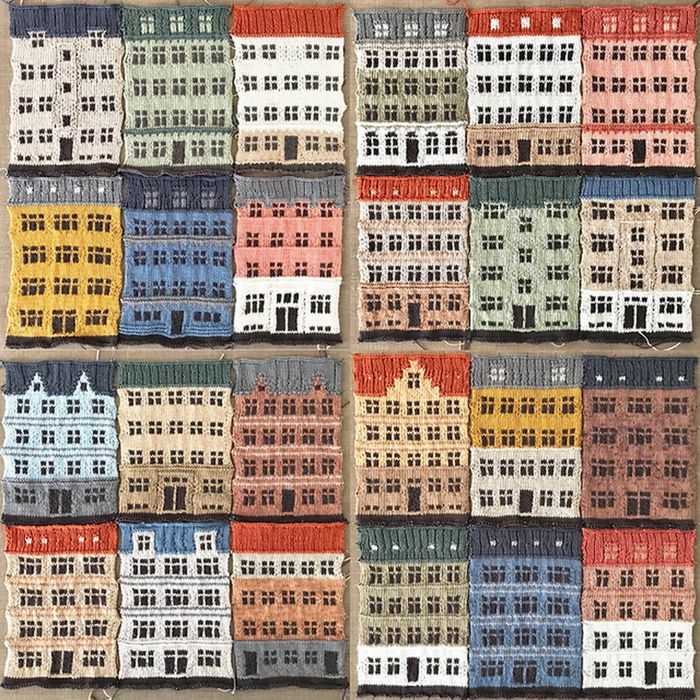
If you enjoy knitting and want to add your personal touch to your projects, creating your own knitting block patterns can be a fun and rewarding endeavor. By designing your own patterns, you have the freedom to experiment with different stitches, colors, and textures to create unique and customized knitting blocks.
To begin creating your own knitting block patterns, start by considering the dimensions and shape you want your block to take. Whether you’re making a simple square or a more complex shape, such as a triangle or hexagon, determine the number of stitches and rows you’ll need to achieve your desired size.
Choose Your Stitch Pattern:
Next, choose a stitch pattern that you want to incorporate into your knitting block. This can be a classic stitch pattern, such as garter stitch or stockinette stitch, or a more intricate and decorative stitch pattern, such as cable or lace stitches. Consider how the stitch pattern will interact with the overall design of your knitting block and how it will complement the yarn you’re using.
Plan Your Color Palette:
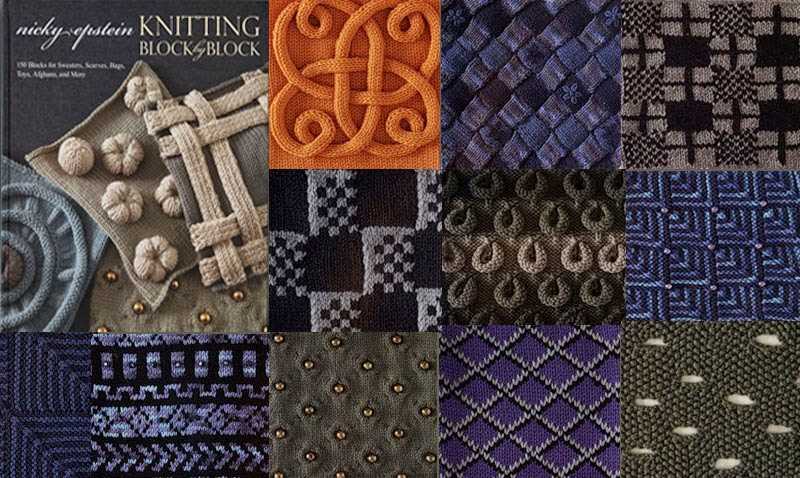
Once you have chosen your stitch pattern, plan your color palette for your knitting block. Decide how many colors you want to use and how they will be incorporated into the design. You may choose to create stripes or color blocks within the block, or you can blend colors together for a gradient effect. Experiment with different color combinations to find the perfect balance and harmony in your knitting block.
Create a Chart or Written Pattern:
After you have determined the stitch pattern and color palette, it’s time to create a chart or written pattern for your knitting block. If you prefer visual representation, use a knitting chart to map out each stitch and color change. Alternatively, you can write out a step-by-step pattern, specifying each row and stitch pattern. Make sure to include any special techniques or instructions that are necessary to achieve the desired design.
Remember, creating your own knitting block patterns is all about embracing your creativity and exploring new possibilities. Don’t be afraid to experiment with different stitch patterns, colors, and shapes to create truly unique and personalized knitting blocks.
Tips for Choosing Yarn for Knitting Blocks
When it comes to knitting blocks, one of the most important factors to consider is the choice of yarn. The right yarn can make a big difference in the outcome of your finished blocks. Here are some tips to help you choose the perfect yarn for your knitting project.
Consider the Fiber Content
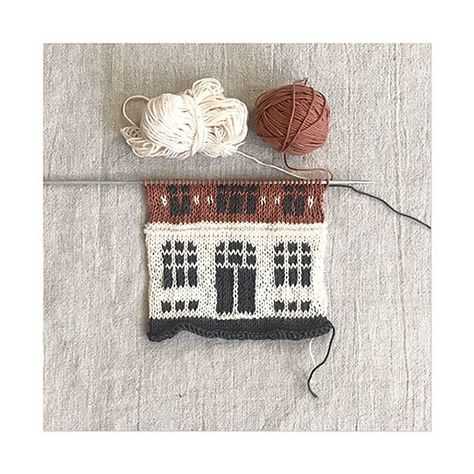
The fiber content of the yarn is an important consideration when knitting blocks. Different fibers have different characteristics that can affect the drape, texture, and durability of your project. For example, wool yarn is soft, warm, and elastic, making it a popular choice for knitting blocks. Cotton yarn, on the other hand, is cool and breathable, making it ideal for summer projects. Consider the properties of the fiber when choosing your yarn to ensure that it meets your desired outcome.
Choose the Right Weight
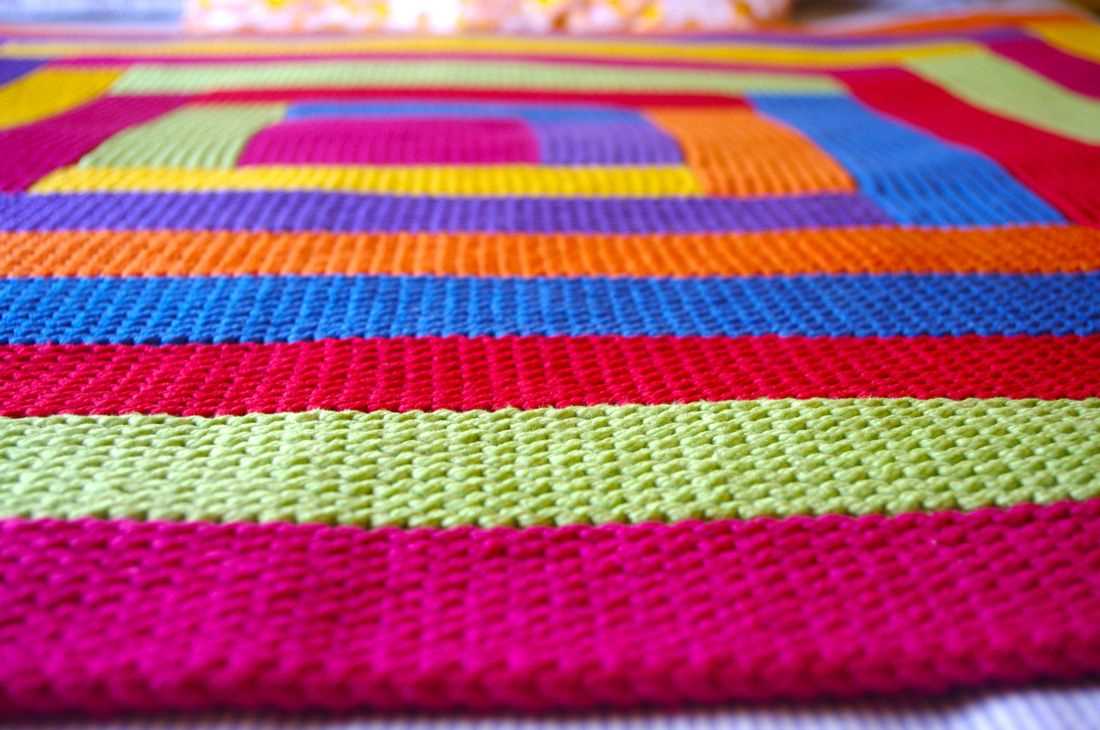
The weight of the yarn is another important factor to consider. The weight of the yarn determines the thickness of the fabric you will be creating. For knitting blocks, you will typically want to choose a yarn that is the same weight as your pattern calls for, or close to it. This will help ensure that your blocks turn out the right size and have the desired appearance. Be sure to check the recommended gauge and use the appropriate weight of yarn for best results.
Consider Color and Pattern
The color and pattern of the yarn are also important considerations when knitting blocks. The color of the yarn can greatly affect the overall look and feel of your project. You may choose to use a solid color for a classic and elegant look, or opt for variegated or self-striping yarn for a more playful and colorful design. Additionally, the pattern of the yarn can add interest and texture to your blocks. Consider how the color and pattern of the yarn will complement your project and enhance the overall appearance.
Take Your Budget into Account
Finally, it’s important to take your budget into account when choosing yarn for knitting blocks. Yarn can vary greatly in price, depending on the fiber content, brand, and quality. Determine how much you are willing to spend on yarn for your project and choose accordingly. Keep in mind that higher-quality yarns may be more expensive, but they often result in a better finished product. Consider the value and longevity of the yarn when making your decision.
By considering the fiber content, weight, color and pattern, and your budget, you can choose the perfect yarn for your knitting blocks. Remember, the right yarn can make all the difference in the outcome of your project, so take your time and choose wisely. Happy knitting!
Tools and Materials for Knitting Blocks
Knitting blocks can be a fun and creative way to experiment with different patterns and textures in your knitting projects. To get started, you will need a few essential tools and materials to help you along the way.
Knitting Needles
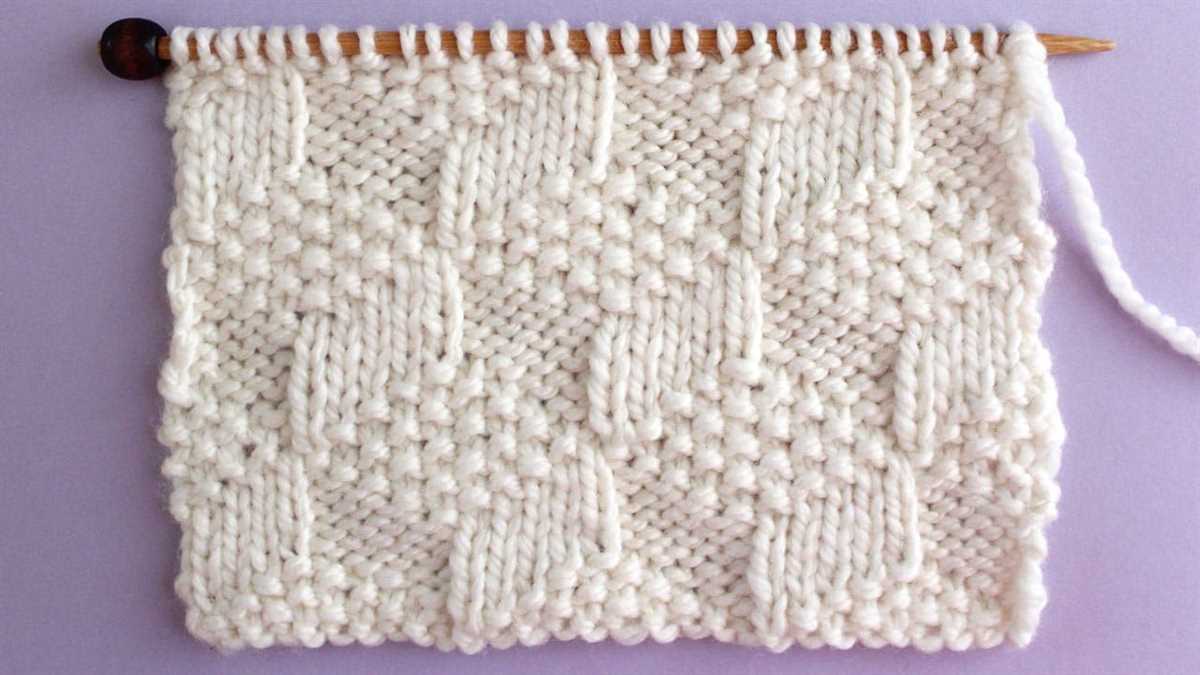
One of the most important tools for knitting blocks is a set of knitting needles. The size of your needles will depend on the weight of yarn you are using and the desired gauge of your project. Choose needles that are comfortable for you to work with and that match the recommended size for your yarn.
Yarn
Yarn is another essential material for knitting blocks. You can choose from a wide variety of yarns, each with its own characteristics and properties. Consider the fiber content, weight, and color of the yarn when selecting it for your project. Some popular yarn choices for knitting blocks include cotton, wool, acrylic, and blends.
Tapestry Needles
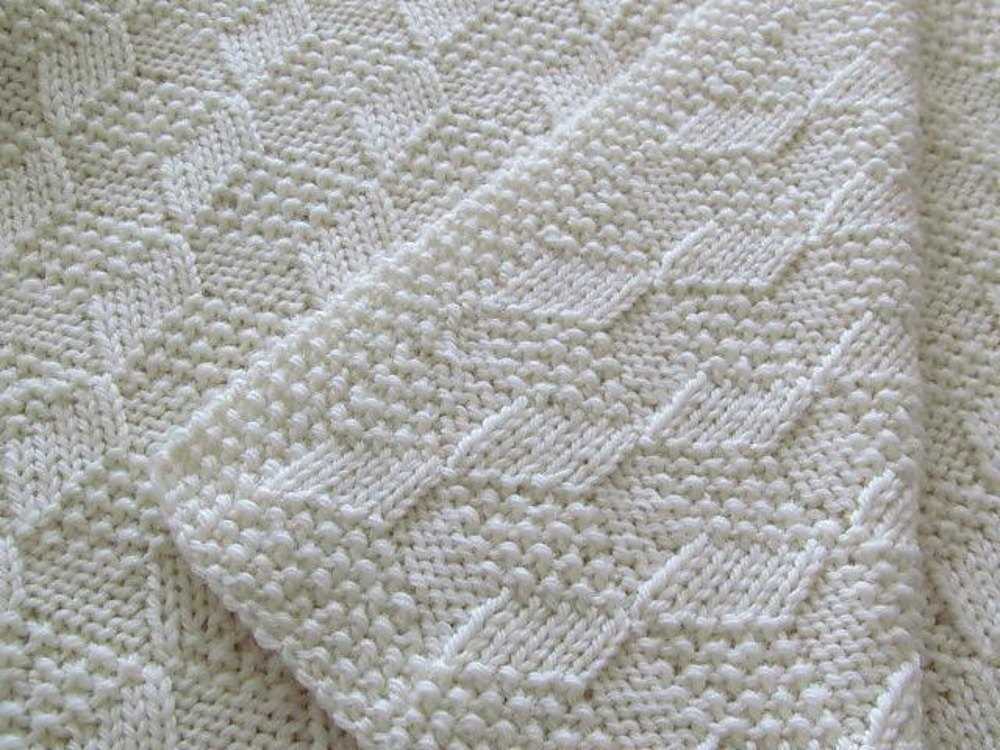
Tapestry needles are used for weaving in ends and seaming your knitted blocks together. These needles have a large eye and a blunt tip, making them perfect for working with yarn. Choose a tapestry needle that is the appropriate size for your yarn and that feels comfortable in your hand.
Stitch Markers
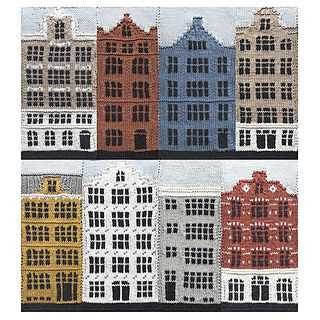
Stitch markers can be useful when knitting blocks, especially if you are working with complex patterns or multiple blocks at once. These small plastic or metal rings can be placed on your knitting needles to mark important sections or stitch counts. They can help you keep track of your progress and prevent mistakes.
Blocking Tools
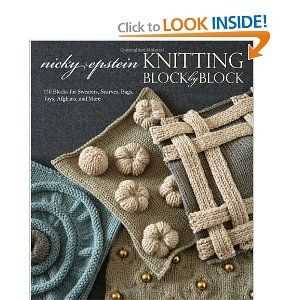
Blocking is an important step in finishing your knitted blocks. It helps to shape and smooth out your project, giving it a polished and professional look. Some common blocking tools include blocking mats, T-pins, and a steam iron. These tools can help you gently stretch and shape your blocks to the desired size and dimensions.
With the right tools and materials, you can create beautiful and unique knitted blocks that can be used for a variety of projects such as blankets, scarves, or even garments. So gather your supplies and get ready to unleash your creativity!
Step-by-Step Instructions for Knitting Blocks
If you’re looking to create stunning block patterns with your knitting, you’ve come to the right place. Knitting blocks can add a unique touch to your projects and allow you to showcase your creativity. Whether you’re a beginner or an experienced knitter, these step-by-step instructions will guide you through the process of creating beautiful knit blocks.
1. Choose your yarn and needles
Start by selecting the yarn and needles you want to use for your block. Consider the desired size and texture of your finished block, and choose yarn that complements your vision. Make sure to check the recommended needle size for the yarn you’ve chosen and select needles accordingly.
2. Cast on stitches
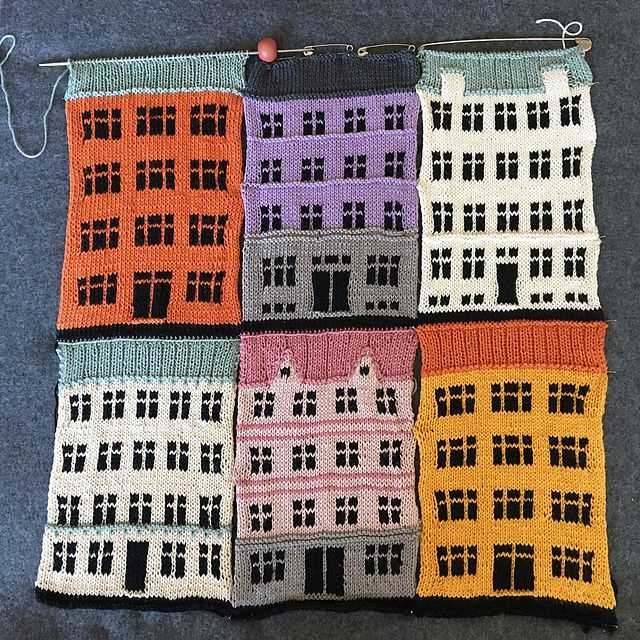
To begin knitting your block, cast on the required number of stitches onto your needles. Use a suitable cast-on method for your project, such as the long-tail cast-on or the knitted cast-on. Make sure to leave a tail of yarn long enough for weaving in later.
3. Knit the rows
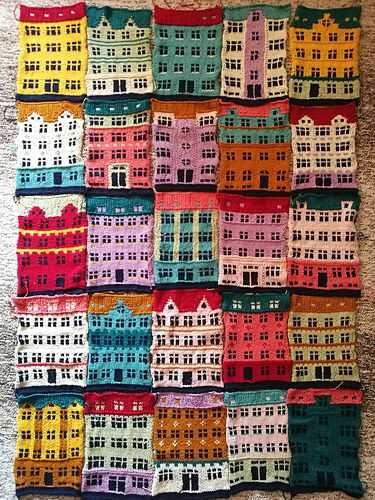
Now it’s time to knit the rows of your block. Follow the pattern instructions for each row, whether it involves simple knit or purl stitches or more intricate stitch patterns. Pay attention to any shaping or color changes that may be required.
4. Bind off
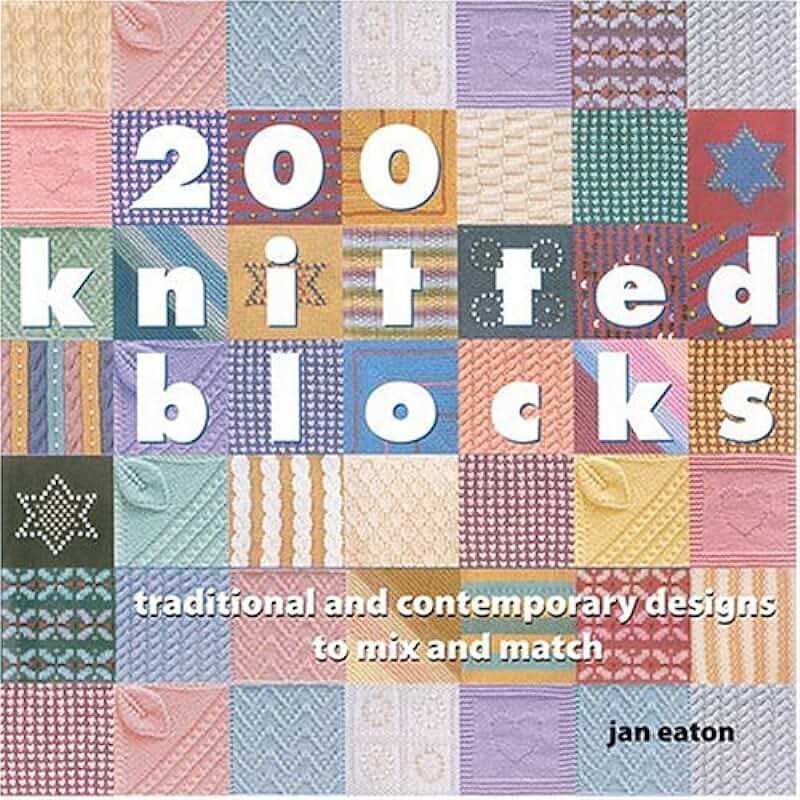
Once you’ve completed all the rows according to your pattern, it’s time to bind off your stitches. There are various bind-off methods you can use, such as the basic bind-off or the stretchy bind-off, depending on the desired edge finish. Remember to leave a tail of yarn for weaving in.
5. Weave in loose ends
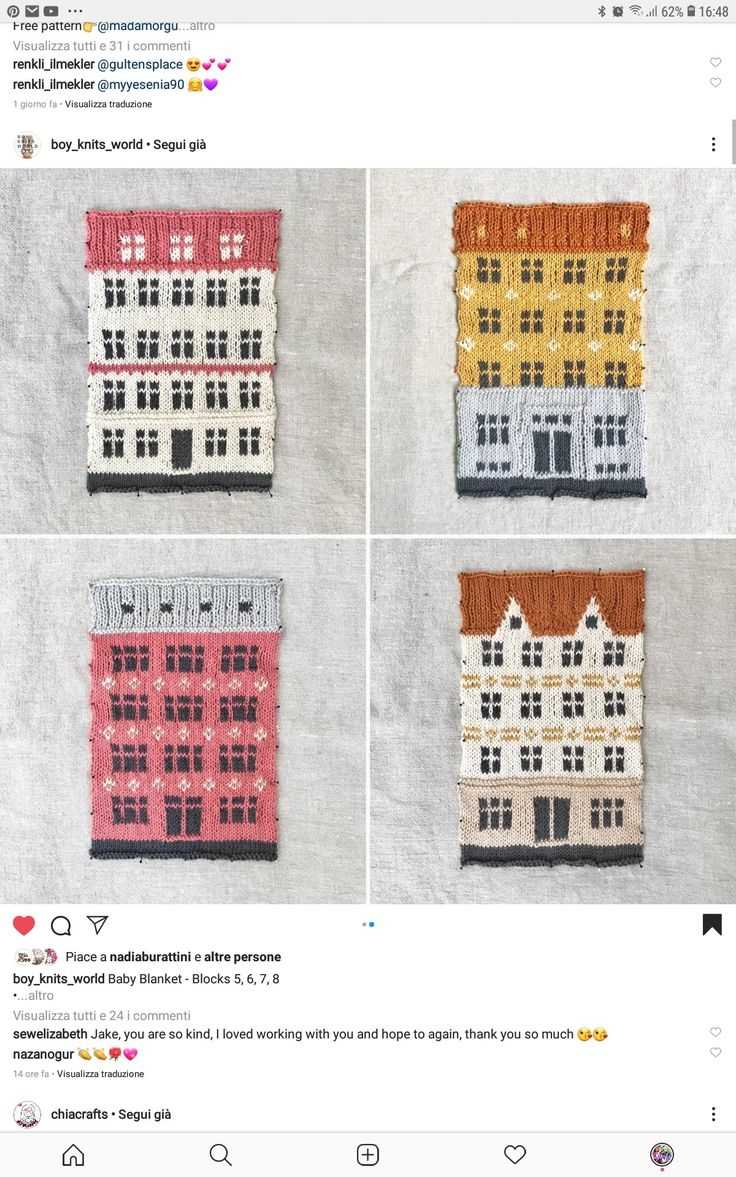
To give your block a polished look, weave in any loose ends of yarn using a tapestry needle. Thread the needle with the yarn tail, and carefully weave it through the stitches on the wrong side of the block. Trim any excess yarn once the ends are secured.
Repeat these steps to create as many blocks as needed for your project. Once you have all your blocks, you can join them together to form a larger piece, such as a blanket or a cushion cover. The possibilities are endless when it comes to knitting blocks, so let your imagination run wild and enjoy the process of creating unique patterns.
Creative Ideas for Using Knitting Blocks
Knitting blocks are versatile and can be used in a variety of creative ways. Whether you are a beginner or an experienced knitter, there are many possibilities for incorporating these blocks into your projects.
1. Patchwork blankets: Knitting blocks can be combined to create beautiful patchwork blankets. You can use blocks of different colors, textures, and patterns to give your blanket an interesting and unique look. Arrange the blocks in different configurations, such as alternating colors or creating an abstract design.
2. Decorative pillows: Another way to use knitting blocks is to make decorative pillows. These can be square or rectangular in shape, with each side featuring a different block pattern. Mix and match the blocks to create a fun and eye-catching design that complements your home decor.
3. Scarves and shawls: Knitting blocks can also be used to create scarves and shawls. Combine blocks of different sizes and patterns to create an asymmetrical or geometric design. You can experiment with different color combinations to achieve the desired effect.
4. Bags and purses: Knitting blocks can be used to make bags and purses of various sizes and styles. Combine blocks in different colors and patterns to create a unique and personalized accessory. Add a lining and handles to complete the bag or purse.
5. Baby blankets and clothing: Knitting blocks are perfect for making baby blankets and clothing. Use soft, baby-friendly yarns and combine blocks of different colors and textures to create adorable and cozy items for little ones.
6. Table runners and placemats: Knitting blocks can be used to create table runners and placemats that add a touch of warmth and elegance to your dining table. Combine blocks of different colors and stitch patterns to create beautiful designs that complement your tableware.
With so many creative ideas for using knitting blocks, you can let your imagination run wild and create beautiful and unique projects that showcase your knitting skills.
Knitting Block Blankets
Knitting block blankets are a popular choice for both beginner and experienced knitters. These blankets are made up of individual squares, or blocks, that are knitted separately and then joined together to create a larger piece. Knitting block blankets allow for creativity and versatility, as each block can be made in a different pattern or color, allowing the knitter to experiment with different techniques and designs.
Choosing the right block pattern is a crucial step in creating a knitting block blanket. There are countless block patterns available, ranging from simple garter stitch squares to more intricate lace or cable patterns. Knitters can choose to follow a specific pattern or create their own unique design by combining different block patterns. Using a variety of patterns can add visual interest to the blanket and showcase the knitter’s skills.
When knitting a block blanket, it is important to consider the size and gauge of each block. Ideally, all blocks should be the same size and have a consistent tension to ensure that the finished blanket is even and well-proportioned. It may be necessary to adjust the needle size or stitch count to achieve the desired size and gauge for each block. A gauge swatch is recommended before starting the blanket to determine the appropriate needle size and ensure that the blocks will all come out the same size.
Joining the blocks is another important step in completing a knitting block blanket. There are several methods for joining blocks, including sewing them together with a tapestry needle or using a crochet hook to join them with slip stitches. It is important to take care when joining the blocks to ensure that they are aligned properly and that the seams are secure. A neatly joined blanket will have a polished finish.
Knitting block blankets are not only a practical and cozy addition to any home, but they also provide an opportunity for knitters to explore their creativity and showcase their skills. Whether using a simple pattern or creating a complex design, knitting block blankets are a versatile project that can be enjoyed by knitters of all levels. So grab your needles and start knitting your own unique block blanket today!
Conclusion
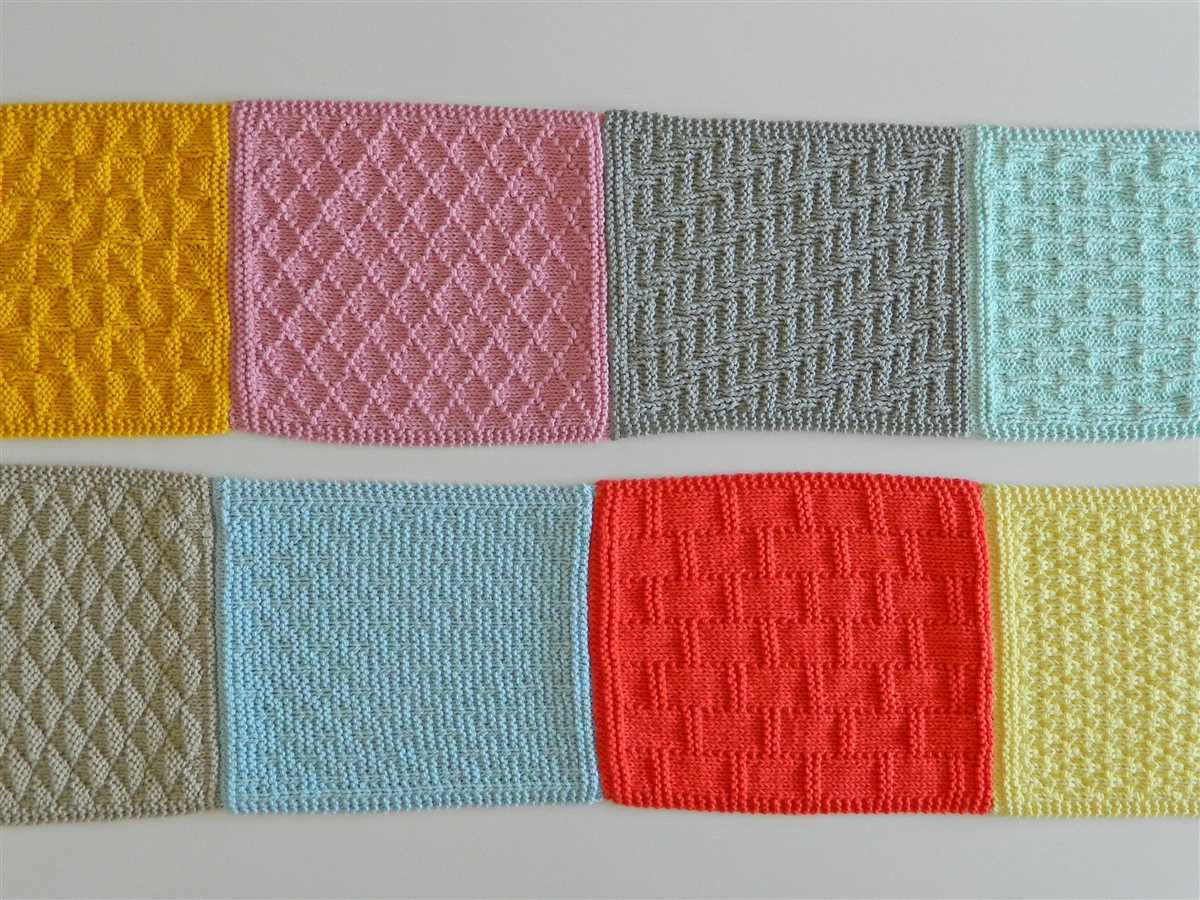
Knitting block scarves are a versatile and creative way to showcase different patterns and textures. Whether you prefer simple garter stitches or intricate lace designs, there is a knitting block pattern for every style and skill level.
By using different knitting techniques, such as colorwork, cables, or lace, you can create unique and eye-catching block scarves. These scarves can be worn as a stylish accessory or given as thoughtful handmade gifts.
In addition to their aesthetic appeal, knitting block scarves also offer a practical benefit. The individual blocks provide warmth and insulation, making these scarves perfect for chillier weather.
When knitting a block scarf, it’s important to choose the right yarn and needle size to achieve the desired drape and texture. You can experiment with different yarn weights, fibers, and needle sizes to create various effects.
To get started with knitting block scarves, you can find numerous patterns and tutorials online or in knitting books. It’s also a great opportunity to practice and perfect different knitting techniques.
Overall, knitting block scarves are a fun and rewarding project that allows you to unleash your creativity and create one-of-a-kind accessories. Whether you’re a beginner or an experienced knitter, give block scarves a try and enjoy the process of crafting something beautiful and functional.